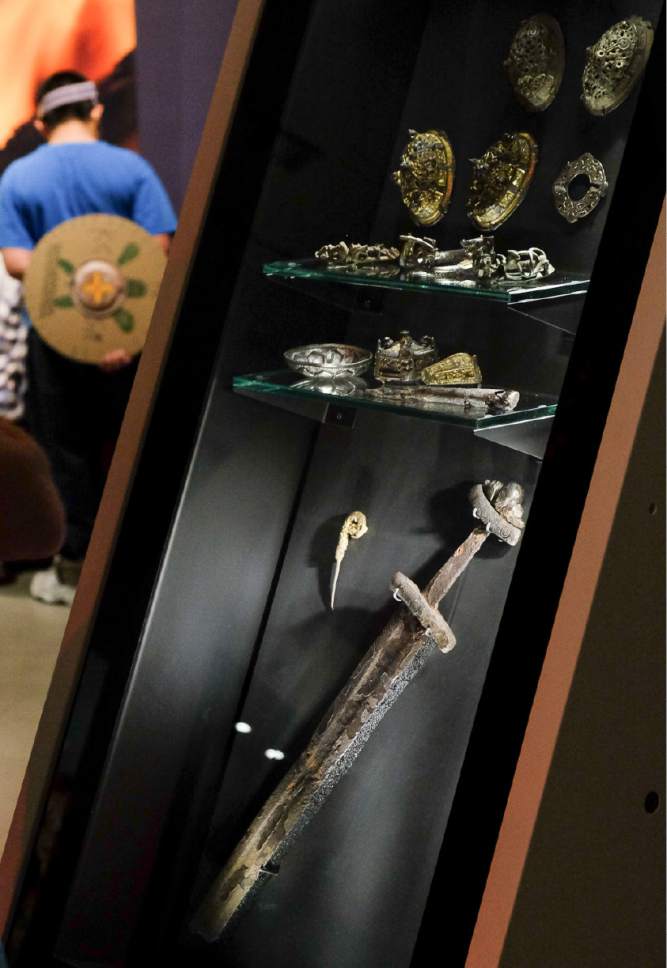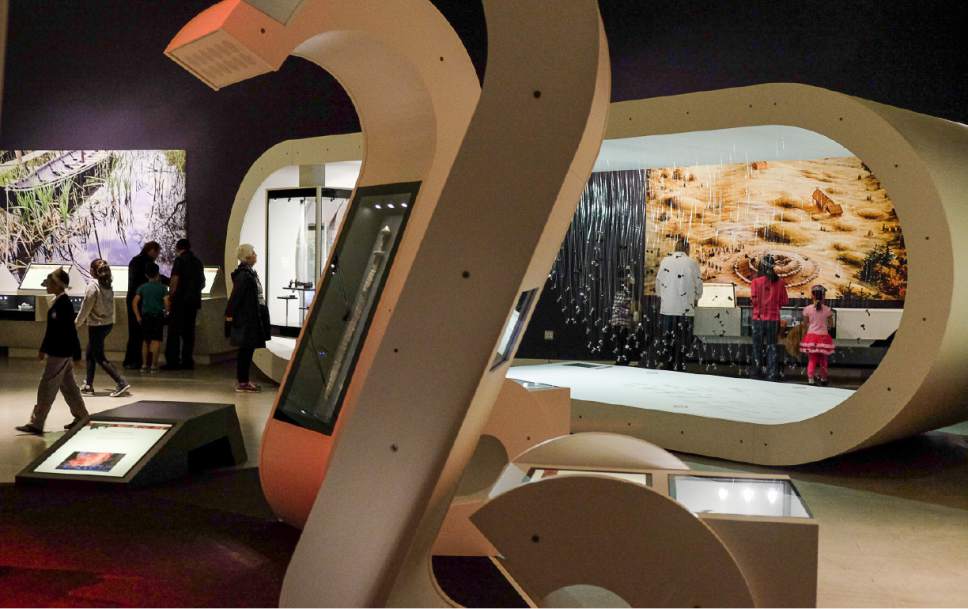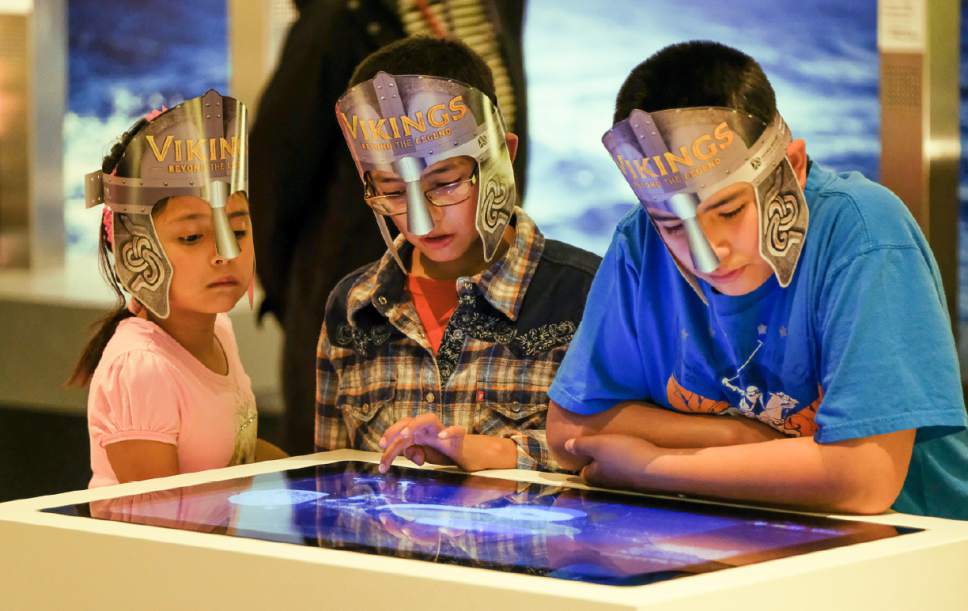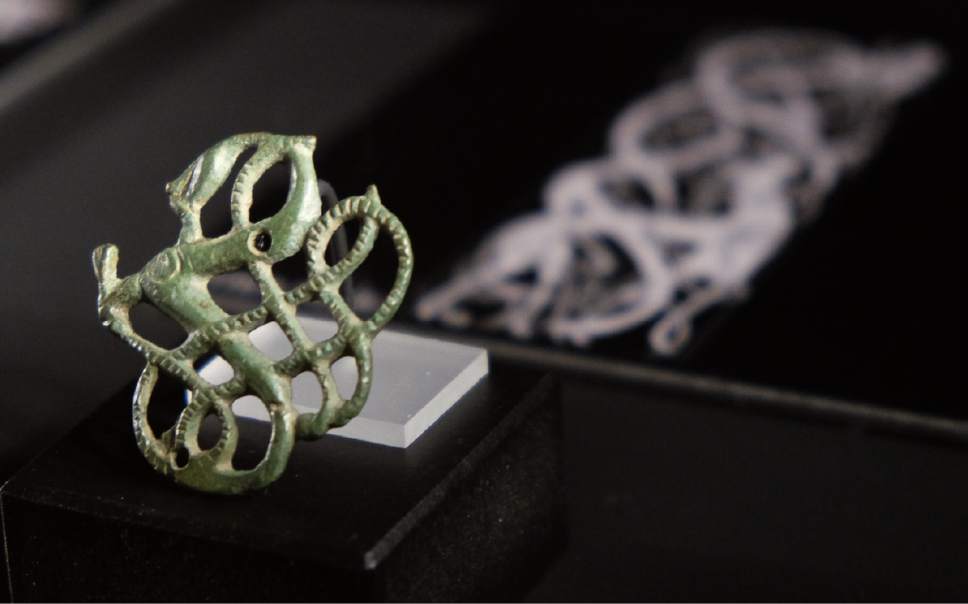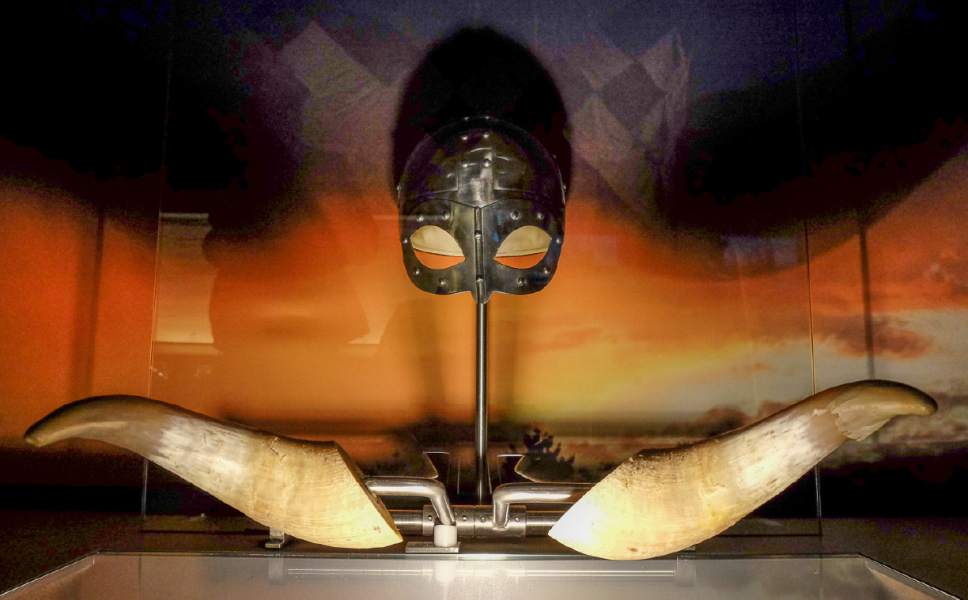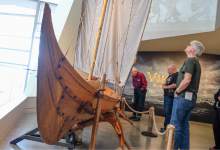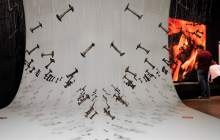This is an archived article that was published on sltrib.com in 2017, and information in the article may be outdated. It is provided only for personal research purposes and may not be reprinted.
One of the first things to know about the Vikings is that they didn't call themselves that.
"Being a Viking was not an ethnic group, or who you were. It was what you did," said Lena Hejll, a senior curator for the Swedish History Museum and project manager of the touring exhibition "Vikings: Beyond the Legend," debuting this weekend at the Natural History Museum of Utah.
The exhibition, created by the Stockholm-based Swedish History Museum and the Austrian production company MuseumsPartner, features about 500 Scandinavian artifacts, dated roughly between A.D. 750 and 1100, that reveal aspects of daily life, theology and craftsmanship of the people who lived during that period. The exhibit, running through Jan. 1, offers "a broader view of the Viking Age," said Sophie Nyman, the Swedish museum's executive director.
Vikings weren't full-time sailors, raiding and pillaging distant lands, Nyman said. Often they were farmers who set sail for other places to trade or settle. Only aristocrats could afford to build boats, with crews made up of the "unfree" — working-class laborers and slaves.
The class divides extended into the hereafter. In Norse theology, Nyman said, aristocrats and soldiers were admitted to the highest level of the afterlife, Valhalla, overseen by the king of the gods, Odin. Women were given a place with Freyja, the goddess of fertility, in Fólkvangr. Slaves and children were relegated to the chilly depths of Hel.
This difference in eternal destinations, Nyman said, explains why women were among the first to embrace Christianity when missionaries brought it to Scandinavia. "Christianity provided a safe place for all: paradise," Nyman said.
The exhibit features interactive elements, such as touch screens on which museumgoers can excavate a burial boat, play a board game called hnefatafl that predates chess, or build a Viking boat from the ground up. The Utah museum has also arranged to have actors, portraying Vikings, roam the exhibit to talk one on one with museumgoers about life a millennium ago.
Among the artifacts on display are jewelry, swords, clothing, hair from a real Viking beard, and a 1,000-year-old piece of charred bread.
One artifact not in the exhibition is a helmet with horns. That familiar symbol of Vikings — seen in everything from the NFL's Minnesota Vikings to the "Hagar the Horrible" comic strip — has never been found by archaeologists, Nyman said.
Blame the German composer Richard Wagner, Nyman said, or the unknown costume designer who put horns on the characters in the opera cycle "Der Ring des Nibelungen." Wagner's masterwork, Nyman said, coincided with a nationalist wave in the 19th century in what is now Norway and Sweden — a wave that first popularized the word "Viking" as an ethnic identity.
The word "Viking" found by archaeologists is mostly used to describe a trip — to go "on a viking." "Being a Viking wasn't something you were born to be," Nyman said. —
'Viking: Beyond the Legend'
The touring exhibition "Viking: Beyond the Legend," co-created by the Swedish History Museum in Stockholm.
Where • Natural History Museum of Utah, 301 Wakara Way, University of Utah campus, Salt Lake City.
When • Now through Jan. 1.
Hours • Daily, 10 a.m. to 5 p.m.; open until 9 p.m. on Wednesdays.
Admission • $14.95 for adults; $12.95 for seniors (65 and up) and youth (13 to 24); $9.95 for children (3 to 12); free for children 2 and under, museum members, or University of Utah students, faculty and staff (with valid ID).




